Why Budapest is truly the Paris of the East
Summer, winter, autumn or spring, it’s always a good time to go to Budapest. It’s a big call, but I would have to say Budapest is my favourite European city.
Nicknamed the Paris of the east, Budapest is a stunning city that is starting to become more popular with tourists.
I first visited Budapest during winter and fell in love with the city. The beautiful buildings, friendly people, and the delicious food from goulash and lángos to Kürtőskalács (a delicious warm pastry roll coated in sugar and usually cinnamon or cocoa).
I’ve been to Budapest four times and can’t wait to go back again. There’s so much to see and explore and every time I go there, it just gets better as I discover more, make friends and as the city itself grows.
What to see and do
You can’t miss the dominating Castle Hill with the palace and castle overlooking the river. Allow at least half a day to explore the castle district – it’s bigger than you think.
While the metro is reliable (even though it looks like it’s had its day), Budapest is a great city to walk. If you’re staying on the Pest side of the city, allow time to walk to Castle Hill over the Szechenyi Chain Bridge.
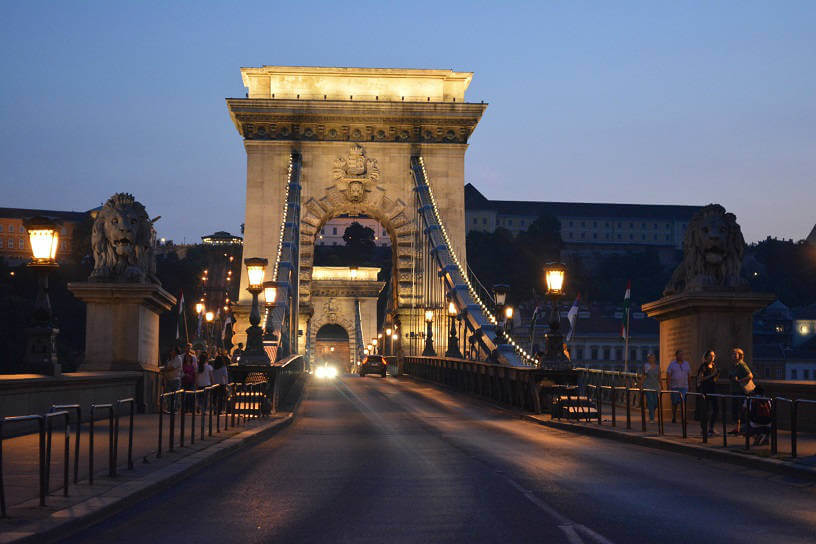
The stone bridge was built in 1849 but was unfortunately nearly destroyed during World War II, but was rebuilt and opened again on November 1949.
The bridge and Castle Hill is illuminated at night so make sure you take a wander to the river after dark.
You can walk up Castle Hill – it only takes about 10-15 minutes or take the funicular. The return price is around $8.
From the top of the funicular, you can explore in and around the castle, through the cobblestone streets of the castle district, and over to the Fisherman’s Bastion for a great view of the city.
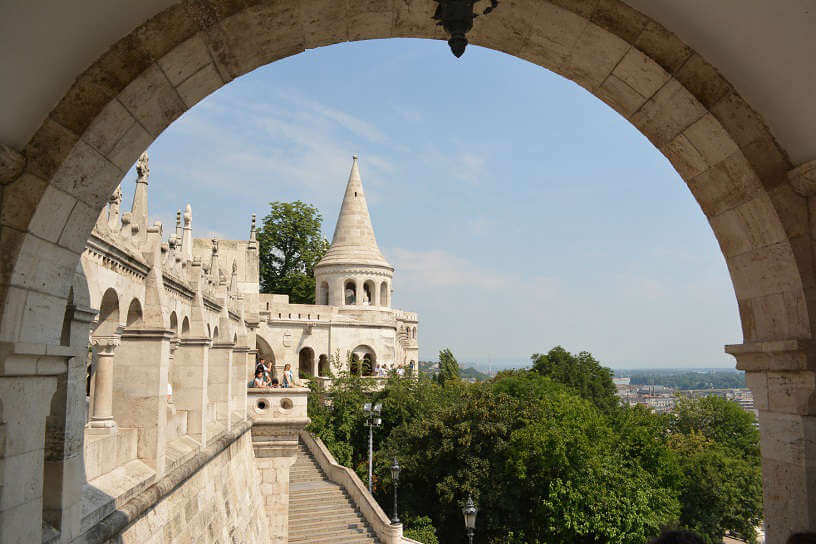
You might also be interested in doing the Hospital in the Rock tour – which is located at the back of the Castle Hill district (follow the signs).
This is a military hospital under the castle district that was built in a natural cave system carved out by water over time.
It was first used as a hospital in World War II and then during the 1956 Budapest uprising. While a little touristy with wax figures used to recreate scenes in the hospital, it is still interesting to hear about what went on here and see some of the original medical equipment as well as a Cold War era nuclear bunker. Entry is only by guided tour, available in English, at a cost of around $17. Tours depart on the hour from 10am and run for an hour.
Still on the Buda side of the river, it’s worth taking a look at Gellert Hill – another great viewpoint where you will also find the Citadel and Budapest’s Statue of Liberty.
Margaret Island is also worth having a look, if only for the musical fountains located at the north and south of the island, however these are only operated in summer. But you can also visit a zoo there, and see the ruins of various religious buildings on the island dating as far back as the 12th century.
From Margaret Island you’ll be able to see the Parliament building – one of the most beautiful and elaborate Parliament buildings I’ve ever seen.
English tours are offered of the Parliament building daily at 10am, 12pm and 2pm. Cost is about $12.
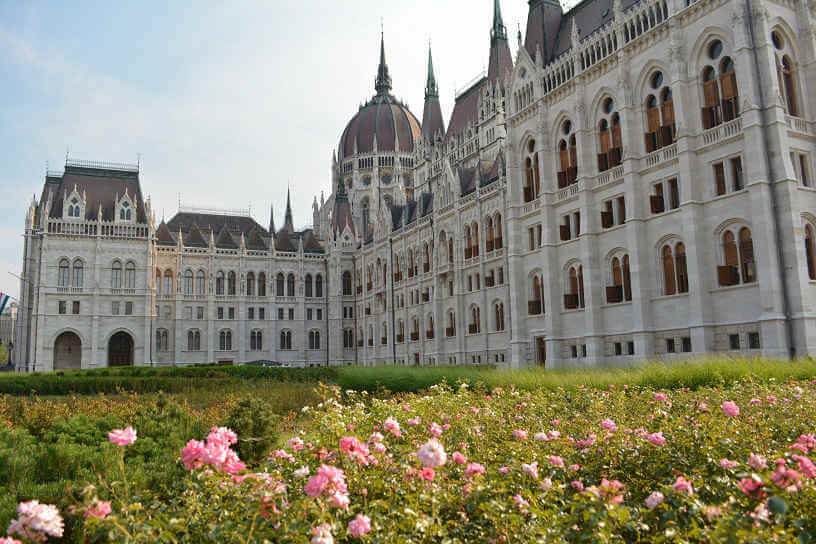
Make sure you don’t miss a Hungarian thermal bath experience. Thermal baths are scattered throughout the city, but the most popular and largest is the Szechenyi Spa Baths in the City Park – on the Pest side.
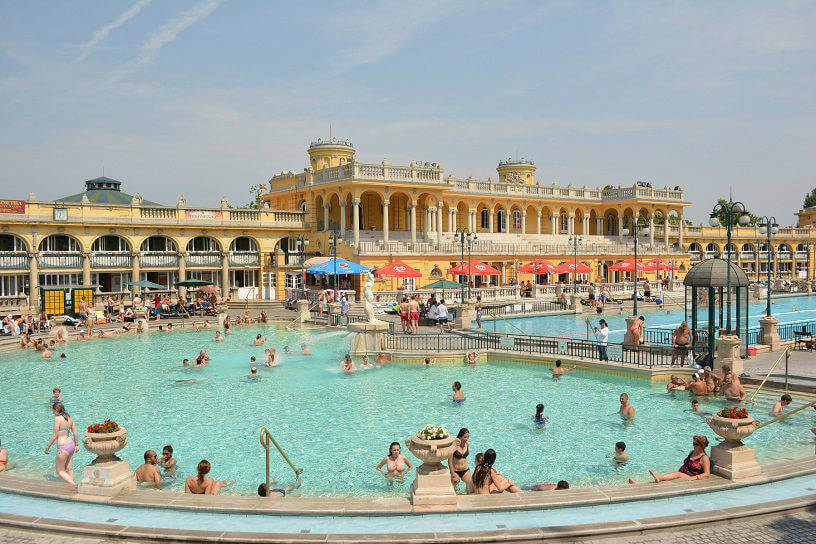
The complex was built in 1913 and has 15 indoor baths and three outdoor pools – ranging from very hot to around 20 degrees.
Entry prices vary depending on if you’re going on a weekday or weekend but start from about $20 with a locker. You can also go along to the night time sparty (spa party).
If you’re walking back into the centre from the City Park, make sure to stop at Heroes’ Square with its impressive monument.
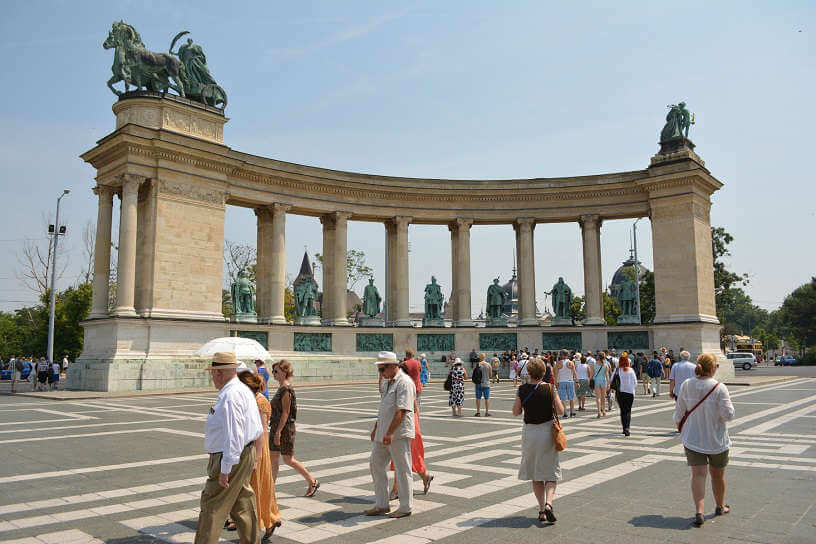
Other things you can do include walking along the Danube River, or visiting the Roman City of Aquincum, built when Hungary was part of the Roman Empire.
After all that sightseeing, you’ll be hungry.
Kiraly utca (King Street) is my go to for food. There are always markets along here and plenty of cafes and takeaways have opened up along here over the past few years.
I’ve enjoyed some great hotdogs, Asian dishes, café treats, pasta, traditional Hungarian dishes and basically any cuisine along here. There’s also some great vintage and second hand clothing stores spread along this street.
Ahead of Christmas, Budapest has great Christmas markets full of great food, mulled wine and gifts - and despite the cold – the atmosphere is warm and inviting with rows of wooden stalls. It’s located right in the centre of the city at the end of Vaci utca.
For nightlife, seek out the “ruin bars”. These are bars and clubs built in formerly abandoned buildings around Budapest. Szimpla Kert on Kazinczy utca in Budapest’s Jewish Quarter was the original ruin bar.
Moving on from Budapest
If you’re looking to explore outside of Budapest, one of the favourite spots of locals is Lake Balaton, only a couple of hours’ drive south east of Budapest. This is where many Hungarians go for the weekend or holidays, and it’s the largest lake in Central Europe.
You may also be interested in visiting Pécs. This is a beautiful university town, full of museums and historical buildings. Pécs is only a couple of hours south east of Budapest, and close to the border with Croatia.
Things you should know:
- Budapest is one of the only places I haven’t been able to use a Visa card everywhere. If possible, have a Mastercard with you or have Hungarian Forints with you.
- The metro is efficient and a good way to get around the city if you don’t want to walk. Tickets can be purchased at machines at each station and are 350 HUF for a single ticket (about $1.50). Make sure you buy a ticket every time and validate it in the orange machines as there’s lots of ticket inspectors around.
- Getting to and from the airport is easy using the metro but will take about an hour. Take the Blue Line to Kobanya-Kispect (the end of the line). Cross the road to the bus terminal and take the 200E bus (follow the plane on the signs). You will need two transport tickets. You can also buy travel cards for unlimited public transport use for 24, 48 or 72 hours.
- Make sure you try the local Hungarian food – it’s delicious. Hungarian food is hearty and on the heavy side (lots of potatoes), so you won’t go hungry.
Lisa Owen is a pint-sized Australian following her dreams to travel to as many places as she can, and loves to share her photography, travel hacks, hiking adventures, and food discoveries along the way. At last count, she has travelled to more than 40 countries in between working in public relations and discovering hidden gems in Australia's great outdoors.
Instagram: @_thelittleadventurer Facebook: The Little Adventurer Australia
The views, opinions and positions expressed by the author and those providing comments are theirs alone, and are meant as travel inspiration only. They do not reflect the opinions of Cover-More Insurance. You should always read the PDS available from your travel insurance provider to understand the limits, exclusions and conditions of your policy and to ensure any activities you undertake are covered by your policy.
Planning a trip?
Discover Our COVID-19 Cover
To find out what our current* benefits do – and don’t – cover, please read:
Plus, for helpful destination-based COVID-19 information, don't forget to check the COVID-19 Travel Risk Tool before and during travel.
*The cover information contained on the above pages refers to Cover-More policies sold on or after 26 June 2023. For cover information on policies sold prior to this date, please read the relevant PDS.